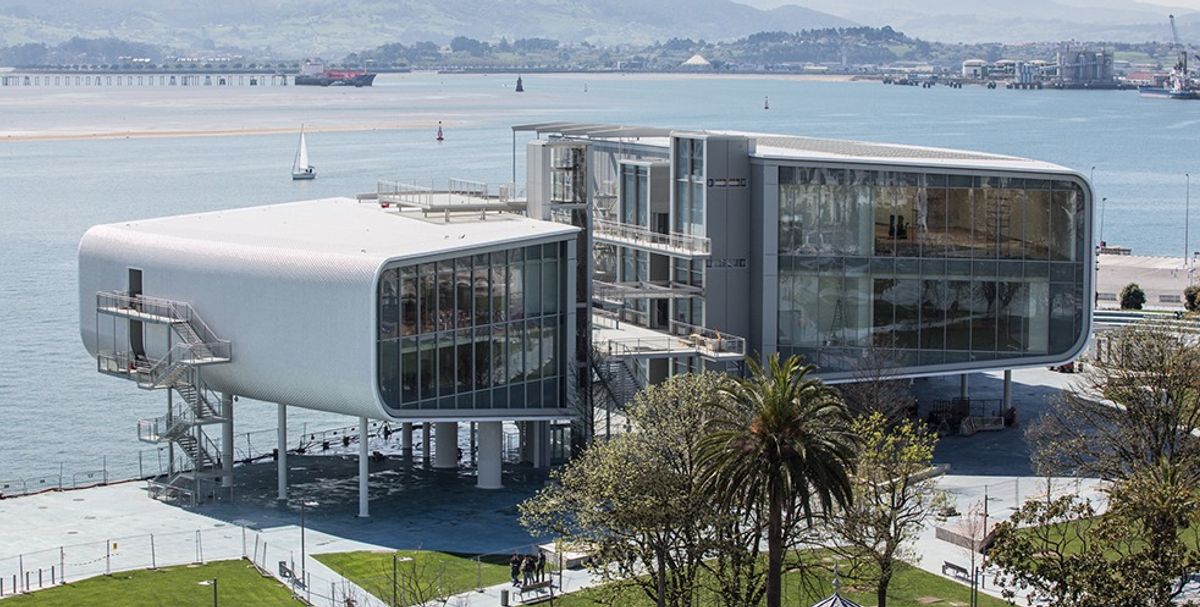The artist Cristina Iglesias’ sea-bed inspired sculptural installation, which “flows” through the waterfront park in the northern Spanish city of Santander towards the new Centro Botín, is in place and will be plumbed in this month ahead of the planned opening on 23 June of the Renzo Piano-designed landmark building. Desde lo subterraneo (from the underground) is a site-specific work in five parts commissioned by the Fundación Botín. Nearby, Carsten Höller’s light installation 7.8Hz, also commissioned by the foundation for the park in which the Renzo Piano-designed new centre is located, is in full working order. For three minutes every hour from sunset until dawn, the park’s lights flicker. “It’s quite extraordinary,” says Benjamin Weil, the Centro Botín’s artistic director. “Every day it is a different time. I have got caught so many times.”
The Centro Botín’s new building, a E80m project, is clad in ceramic tiles, creating another “extraordinary” light effect, Weil says. “The light is constantly changing over the Bay of Santander as is the colour of the sea. That will be reflected by the tiles.” Overlooking the bay and the city, the museum, which is the Italian architect's first completed building in Spain, could be compared to the new Whitney Museum of American Art in New York, he says. Originally due to open in 2014, the site where a ferry terminal used to stand proved challenging. Responding to concerns that the building would block views of the bay, Piano raised the structure above the park and split the building into two halves. One wing houses 2,500 sq. metres of galleries and the other a 300-seat auditorium as well as a restaurant and workshops.
The inaugural exhibitions are a solo show by Höller, organised by the former Tate Modern director Vincente Todoli and Udo Kittelmann, who leads Berlin’s Nationalgalerie, and an exhibition of drawings by Goya from the Prado’s collection organised by two of the Madrid museum’s curators. “Höller is interested in doubles and duplications.” The Belgian artist’s signature slides might be absent but his pill-popping work Pill Clock will be dispensing placebos, Weil reveals. “Höller is creating two itineraries, one leading to the south, overlooking the sea and the other north, facing the city.” Full-height glazed walls of the centre frame both views.
The Fundación Botín supports the Prado’s research into its Master drawing collection. The first volume of the catalogue raisonné of Goya’s drawings is due to be published this year thanks to the five-year partnership, “hopefully before the exhibition [Agility and Audacity] closes”, Weil says. Works from the foundation’s 200-strong collection of contemporary art will also be on show.


